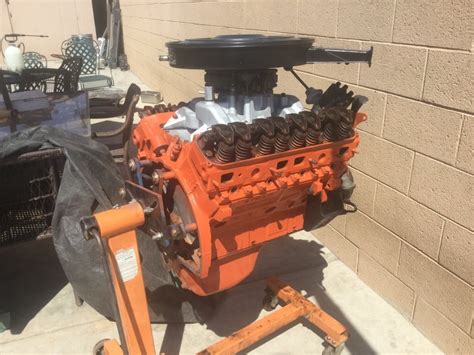Explore essential insights on engine mounts, including types, signs of wear, replacement tips, and benefits of upgrading for optimal vehicle performance.When it comes to maintaining the performance and longevity of your vehicle, engine mounts play a crucial yet often overlooked role. Engine mounts are essential components that secure the engine to the vehicle’s chassis, absorbing vibrations and shocks, while ensuring proper alignment and stability. In this blog post, we’ll delve into understanding the importance of engine mounts and explore the different types and features available on the market. We’ll also discuss the signs that indicate worn-out engine mounts and guide you through the replacement process. Lastly, we’ll highlight the benefits of upgrading your engine mounts, ensuring a smoother, more reliable driving experience. Whether you’re a seasoned mechanic or a car enthusiast, this comprehensive overview will provide valuable insights into this vital aspect of automotive maintenance.
Understanding the Importance of Engine Mounts
Engine mounts are an essential component in the overall operation of an automobile, as they serve several crucial functions that contribute to the performance, safety, and longevity of the vehicle. Firstly, they are designed to hold the engine in place, ensuring that it remains securely attached to the vehicle frame while also absorbing vibrations and reducing noise generated by the engine during operation. This is particularly important because excessive vibrations can lead to structural damage over time, which may compromise the vehicle’s performance and safety.
Moreover, the role of engine mounts extends beyond vibration dampening; they also provide support for the engine’s weight and help maintain proper alignment of the engine with the drivetrain components. When installed correctly, engine mounts not only enhance driving comfort by minimizing engine movement but also protect other critical components in the vehicle from undue stress and wear. In essence, these mounts act as a buffer to isolate the engine from the rest of the vehicle’s structure, which is vital for maintaining a smooth and efficient driving experience.
It is imperative to ensure that you regularly inspect and maintain your engine mounts, as worn or damaged mounts can lead to a host of problems, including increased noise levels, impaired handling, and even potential damage to the engine or transmission. Moreover, understanding the variety of engine mounts available and their specific features can lead to informed decisions when considering replacements or upgrades. To summarize, the significance of engine mounts cannot be overstated; they are indispensable for promoting vehicle performance, ensuring driver comfort, and upholding safety standards.
Types of Engine Mounts and Their Features
When it comes to automotive engineering, understanding the types of engine mounts is crucial for both performance and safety, as they serve as a vital connection between the engine and the vehicle’s chassis, absorbing vibrations and minimizing engine movement, which ultimately plays a significant role in enhancing the driving experience.
There are several popular types of engine mounts, including hydraulic, solid, and semi-solid mounts, each designed to fulfill specific mechanical requirements, with hydraulic mounts typically filled with fluid to effectively dampen vibrations, providing a smoother ride, whereas solid mounts offer maximum stability and are often favored for racing applications due to their rigidity, thus ensuring that the engine does not shift during high-performance driving.
Furthermore, semi-solid mounts feature a combination of the characteristics of both hydraulic and solid mounts, often utilizing a rubber insert that allows for some flex while still controlling the engine’s movement to a certain degree, making them suitable for daily drivers who seek a balance between comfort and performance, demonstrating the impo
Signs of Worn Out Engine Mounts
Engine mounts serve a critical role in vehicle performance, stability, and vibration control, so recognizing the signs of worn out engine mounts is essential for any car owner who wishes to maintain the efficiency and longevity of their vehicle, as early detection can prevent further mechanical issues and costly repairs, ultimately leading to safer driving experiences.
One of the most noticeable signs of worn out engine mounts is an increase in vibrations felt within the cabin and steering wheel; when these mounts deteriorate or crack, they become less effective at isolating engine movement from the vehicle structure, causing excessive vibrations that can be both uncomfortable and alarming to the driver and passengers alike, potentially indicating deeper mechanical troubles that require immediate attention.
Another prevalent indication involves unusual engine movement or misalignment, which may manifest as a noticeable shift during acceleration or deceleration, resulting in an unsettling feeling, especially during turns or when the vehicle encounters bumps; if you notice that your engine appears to be shifting out of alignment, then it’s imperative to have your engine mounts inspected as soon as possible to avoid complications that can arise from further engine displacement.
Additionally, a loud clunking or banging noise while driving, particularly when shifting gears or on uneven surfaces, is a classic symptom of failing engine mounts, as these sounds are often produced by the engine moving uncontrollably and making contact with other components of the vehicle, which can lead to significant damage if left unchecked; thus, maintaining vigilance for these auditory warnings can facilitate a proactive approach to vehicle maintenance.
In conclusion, understanding these prevalent signs of worn out engine mounts—including excessive vibrations, unusual engine movement, and loud noises—can empower vehicle owners to take timely action and safeguard their vehicles from potential damage that may arise from neglected engine components.
How to Replace Engine Mounts
Replacing engine mounts is a crucial maintenance task that not only helps in enhancing the performance and longevity of your engine but also contributes to a smoother driving experience, and to successfully carry out this task, you need to gather the appropriate tools and materials, which typically include a jack, jack stands, a ratchet set, and possibly some additional hardware depending on your vehicle’s specific requirements.
First, you should start by ensuring that the vehicle is parked on a flat surface and that the engine is cool before lifting it with a jack and securing it with jack stands, thus allowing you to access the engine mounts, which are usually located at the corners of the engine bay, and it’s advisable to consult your vehicle’s manual to identify the specific mounting points corresponding to your engine model.
Once you have located the engine mounts, the next step is to remove any components that may obstruct access to these mounts, and as you remove the old mounts, it is essential to inspect any bolts or washers for wear, replacing them as necessary, and finally, after securing the new mounts in place and reconnecting the components that were removed earlier, you should lower the vehicle back to the ground and take the time to test drive it, ensuring that there are no unusual vibrations or noises that could indicate improper installation.
Benefits of Upgrading Engine Mounts
Upgrading your engine mounts can lead to an array of beneficial outcomes that enhance both the performance and longevity of your vehicle, particularly for those who own high-performance cars or engage in towing, racing, or off-roading activities; the stability provided by upgraded mounts significantly reduces vibrations, which not only contributes to a smoother ride but also safeguards the internal components of the engine and the car itself from unnecessary wear and tear over time.
Furthermore, it is important to note that high-quality engine mounts are designed to better absorb shocks and vibrations compared to standard mounts, allowing for improved engine positioning and alignment, ultimately translating to more efficient horsepower transfer to the drivetrain and increased responsiveness when accelerating, which is something many car enthusiasts strive for in order to attain an elevated driving experience.
Finally, upgrading the engine mounts not only contributes to enhanced safety through improved control and handling but also reduces the likelihood of unnecessary repairs in the future; investing in durable and performance-oriented mounts can help you save money in the long run by minimizing the potential for catastrophic engine failures and the substantial repair bills that often accompany them, thereby making it a wise decision for anyone looking to maximize their vehicle’s potential and reliability.
Frequently Asked Questions
What are 440 engine mounts?
440 engine mounts are components designed to secure the 440 cubic inch V8 engine in place within a vehicle, providing stability and reducing engine vibrations.
Why are engine mounts important?
Engine mounts are crucial as they support the engine’s weight, absorb vibrations, and allow for some movement to prevent damage to the engine and drivetrain.
How do I know if my 440 engine mounts need replacement?
Signs that your 440 engine mounts may need replacement include excessive engine vibration, engine movement during acceleration or braking, and visible wear or damage to the mounts.
Can I replace 440 engine mounts myself?
Yes, if you have basic mechanical skills and the right tools, you can replace 440 engine mounts yourself, though it may require a friend to help lift the engine during the process.
What materials are 440 engine mounts made from?
440 engine mounts are typically made from rubber, metal, or polyurethane, providing varying degrees of vibration isolation and durability.
Are there performance upgrades available for 440 engine mounts?
Yes, there are aftermarket performance engine mounts available for the 440 engine that offer improved rigidity and reduced engine movement for enhanced handling.
How much do 440 engine mounts typically cost?
The cost of 440 engine mounts varies based on the brand and material, but they typically range from $50 to $200 per mount.





